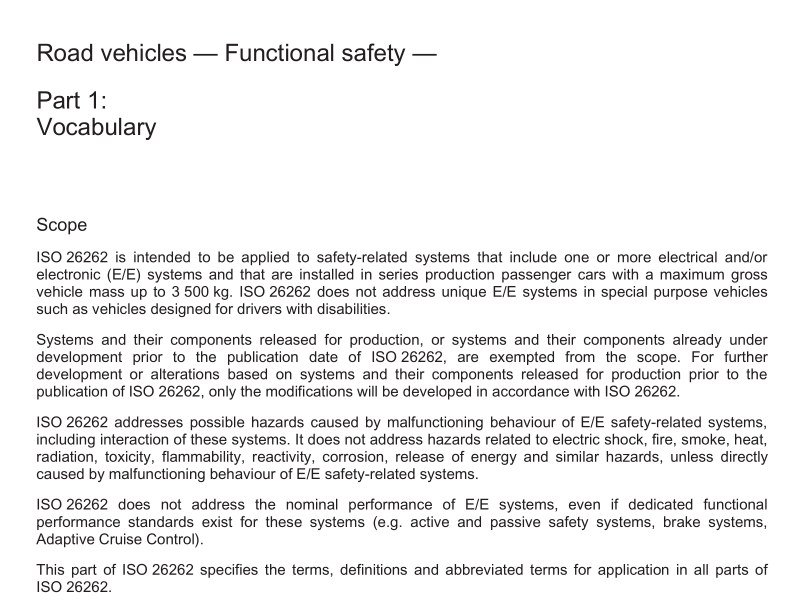BS ISO 26262-1 pdf download

BS ISO 26262-1 pdf download Road vehicles — Functional safety Part 1: Vocabulary
1.3
architecture
representation of the structure of the item (1.69) or functions or systems (1.129) or elements (1.32) thatallows identification of building blocks, their boundaries and interfaces, and includes the allocation (1.1) offunctions to hardware and software elements
1.4
assessment
examination of a characteristic of an item (1.69) or element (1.32)
NOTE A level of independence (1.61) of the party or parties performing the assessment is associated with eachassessment.
1.5
audit
examination of an implemented process
1.6
Automotive Safety Integrity LevelASIL
one of four levels to specify the item’s (1.69) or element’s (1.32) necessary requirements of lSO 26262 andsafety measures (1.110) to apply for avoiding an unreasonable residual risk (1.97), with D representing themost stringent and A the least stringent level
1.7
ASIL decomposition
apportioning of safety requirements redundantly to sufficiently independent elements (1.32), with the objectiveof reducing the ASiL (1.6) of the redundant safety requirements that are allocated to the correspondingelements
1.8
availability
capability of a product to be in a state to execute the function required under given conditions, at a certaintime or in a given period, supposing the required external resources are available
1.9
baseline
version of a set of one or more work products, items (1.69) or elements (1.32) that is under configurationmanagement and used as a basis for further development through the change management process
NOTE See ISO 26262-8:2011,Clause 8.
1.10
branch coverage
percentage of branches of the control flow that have been executedNOTE 1100 % branch coverage implies 100 % statement coverage (1.127).
NOTE2 An if-statement always has two branches – condition true and condition false – independent of the existence ofan else-clause.
1.11
calibration data
data that will be applied after the software build in the development process EXAMPLE Parameters (e.g. value for low idle speed, engine characteristic diagrams); vehicle specific parameters
(adaptation values) (e.g. limit stop for throttle valve); variant coding (e.g. country code, left-hand/right-hand steering).
NOTE Calibration data cannot contain executable or interpretable code









